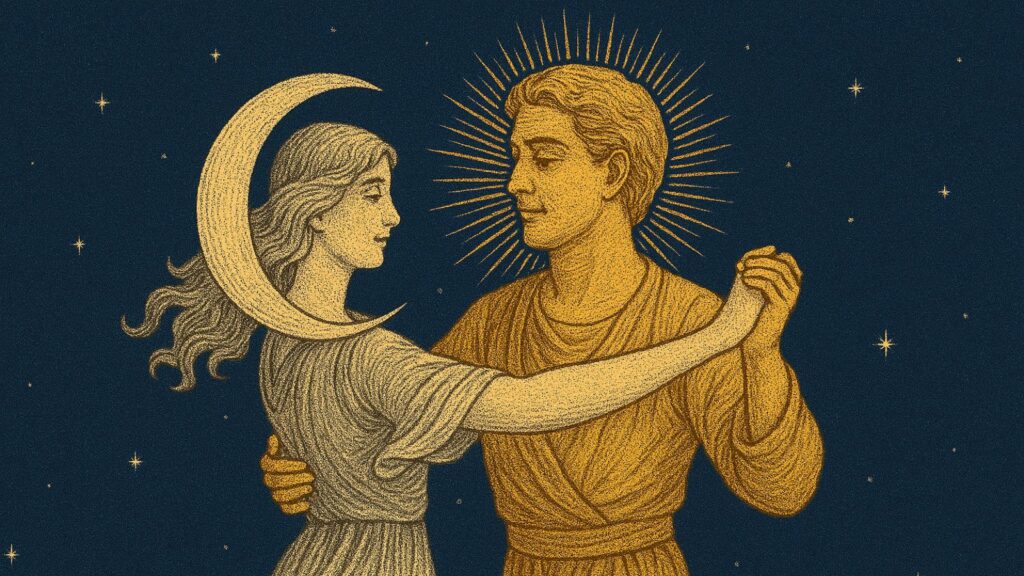Albert Hofmann died peacefully last Tuesday morning, 29th April, in his home near Basel, Switzerland. He was 102 years old. Just last weekend we talked to him, and he expressed his great joy about the blooming plants and the fresh green of the meadows and trees around his house. His vitality and his open mind stayed with him until his last breath.
He is considered one of the most important chemists of our time. He is the discoverer of LSD, which he called a “wonder drug” and a “problem child.” In addition, he did pioneering work as a researcher of other psychoactive substances as well as active agents of important medicinal plants and magic mushrooms. Under the spell of the consciousness-expanding potential of LSD, the scientist turned increasingly into a philosopher of nature and a visionary critic of contemporary culture.
Albert Hofmann remained active until his death. He communicated with colleagues and experts from all over the world, gave interviews, and showed great interest in world affairs, although he decided to retire from public life a few years ago. Nevertheless he welcomed visitors at his home on the Rittimatte, and opened the door until late in the evening.
He managed to maintain his almost childlike curiosity for the wonders of nature and creation. In his “paradise,” as he would call his home, he enjoyed being close to nature, especially to plants. During one of our last visits, he said to us with luminous eyes: “The Rittimatte is my second most important discovery.” It was always a unique experience to stroll with him over his meadows and to share his enjoyment of the living nature all around.
Gratefully and lovingly we grieve for an outstanding scientist, an important philosopher, a dear and true friend, and a member of the board (of the Gaia Media Foundation in Basel).
Albert Hofmann was born on January 1906 in the small, quiet town of Baden, Switzerland, as the eldest of four children. His father was a toolmaker in a factory where he met Albert’s mother-to-be. When the elder Hofmann fell seriously ill, Albert had to support the family, and so decided to pursue a commercial apprenticeship. At the same time, he began to study Latin and other languages, since he wanted to take his A-levels, which he accomplished at a private school paid for by a godfather.
In 1926, at the age of twenty, Albert Hofmann began to study chemistry at the University of Zurich. Four years later he received his doctorate, with distinction. Subsequently, he worked at the Sandoz pharmaceutical-chemical research laboratory in Basel, a company to which he proved his loyalty during more than four decades of uninterrupted service. (In 1996 Sandoz and Ciba-Geigy merged to become Novartis.)
At Sandoz, he worked with medicinal plants and mushrooms. He took a special interest in alkaloids (nitrogen compounds) of ergot, a cereal fungus. In 1938 he isolated the basic component of all therapeutically essential ergot alkaloids, lysergic acid, and he mixed it with a series of chemicals. He then tested the effects of the the lysergic acid derivatives as circulatory and respiratory stimulants — among others LSD-25 (Lysergic acid diethylamide). Because the effects observed fell short of expectations, however, the pharmacologists at Sandoz quickly lose interest in it.
Five years later, following a “peculiar presentiment,” Albert Hofmann turned again to LSD-25. On 16 April 1943, while synthesizing, he was overcome by unusual sensations — “a remarkable restlessness, combined with a slight dizziness,” — which prompt him to interrupt his laboratory work. “At home I lay down and sank into a not unpleasant intoxication-like condition, characterized by an extremely stimulated imagination. In a dreamlike state, with eyes closed (I found the daylight too unpleasantly glaring), I perceived an uninterrupted stream of fantastic pictures, extraordinary shapes with intense, kaleidoscopic play of colors. After some two hours this condition faded away.”
Three days later, on 19 April 1943, Hofmann set out for the first voluntary LSD trip in the history of man. Because he could not yet judge the enormous efficacy of the drug, he took 250 micrograms, a relatively high dose, and realized the hallucinogenic power of the substance in all its intensity.
With his discovery of LSD, Albert Hofmann set off a snowball effect, which turned into an avalanche in no time. It influenced the late second millennium – -at least in the Western world — to an extent comparable only to the “pill.” Consciousness researchers respectfully spoke of an “atom bomb of the mind.”
Albert Hofmann made other important contributions to pharmaceutical research. In 1958, he was the first researcher to succeed in isolating the psychoactive substances psilocybin and psilocin from Mexican magic mushrooms (Psilocybe mexicana); and in Ololiuqui, the seeds of a climbing plant, he found substances related to LSD. He isolated and synthesized substances of important medicinal plants in order to study their effects. His basic research blessed Sandoz with several successful remedies: Hydergine, effective in geriatrics; Dihydergot, a circulation and blood-pressure stabilizing medicament; and Methergine, an active agent applied in gynecology.
Hofmann stayed with Sandoz, as head of research in natural medicines, until his retirement in 1971. From then on he devoted more and more of his time to writing and lecturing. He won increasing recognition for his pioneering scientific ventures: he was given honorary doctorates by the ETH Zurich, the Stockholm university, and the Berlin Free University; and was called to serve on the Nobel Prize Committee. Here, outstanding contributions to research were honored — but Albert Hofmann’s life work comprises much more.
From the start he took a favorable view of efforts by physicians and psychotherapists to include LSD into new approaches for the treatment of manifold chronic diseases. But LSD isn’t only useful with special diagnoses. It was Hofmann’s firm belief that the “psychedelic” potential of this “wonder drug” could be beneficial to all of us.
In LSD-induced altered states of consciousness, we don’t see mere psychotic delusions of a chemically manipulated mind, but rather windows to a higher reality, true spiritual experiences during which a normally deeply-buried potential — our unity with the heavenly element of creation — reveals itself. In his book Insight – Outlook, Hofmann wrote, “The one-sided belief in the scientific view of life is based on a far-reaching misunderstanding. Certainly, everything it contains is real — but this represents just one half of reality; only its material, quantifiable part. It lacks all those spiritual dimensions which cannot be described in physical or chemical terms; and it’s exactly these which include the most important characteristics of all life.”
It’s not the single consumer alone who profits from the chemicals that help us to understand these aspects of the world; for Hofmann, LSD could help to heal the deficits that the Western world chronically suffers from: “Materialism, estrangement from nature . . ., lack of professional fulfillment in a mechanized, lifeless world of employment, boredom and aimlessness in a rich, saturated society, the missing of a sense-making philosophical fundamentalness of life.”
Starting from experiences as LSD conveys them, we could “develop a new awareness of reality” which “could become the basis of a spirituality that’s not founded on the dogmas of existing religions, but on insights into a higher and profounder sense” through which to recognize “the revelations of the book which God’s finger wrote.” When such insights “become established in our collective consciousness, it could arise from that, that scientific research and the previous destroyers of nature — technology and industry — will serve the purpose of changing back our world into what it formerly was: into an earthly Garden of Eden.”
With this message, the genius chemist turned into a profound philosopher of nature and a visionary critic of contemporary culture. Hofmann maintained a critical distance from the LSD euphoria of the hippies and admitted that he had fathered a “problem child,” as noted in the title of one of his most known works. He always underlined the risks of uncontrolled intake. On the other hand, he never tired of emphasizing the basic difference between LSD and many other drugs: even if used repeatedly, it doesn’t become addicting; it doesn’t reduce one’s awareness; taken in a normal dose, it’s absolutely non-toxic.
He could not understand the demonizing of psychedelics, as pursued by the mass media, conservative politicians, and governments from the sixties onward; for him, there was no reason why mentally stable persons in the right setting shouldn’t enjoy LSD. And he was all the more disappointed when, in the late sixties, the use of LSD was criminalized worldwide — even for therapeutic and research purposes.
Some impetus for change came from the impact of the international Symposium “LSD – Problem Child and Wonder Drug” in 2006 in Basel, at the occasion of his 100th birthday. “After this conference,” he said, “my problem child has definitely turned into a wonder child,” and he regarded this development as his most beautiful birthday present. Shortly before his 102nd birthday, he enjoyed taking notice that the first LSD study with humans had received the permission of the Federal Office of Public Health in Bern, a development which he called the “fulfillment of my heart’s desire.”
His life has become an ideal for many for how we can reach a great age in mental and physical vigor by retaining a childlike curiosity.
Albert Hofmann repeatedly expressed his conviction that his mystical experiences and his trips into other worlds of consciousness — which he experienced first spontaneously as a child and later during his experiments with psychedelic substances — would be the best preparations for the last journey that everybody has to go on at the end of her or his life. He retained his curiosity for himself for his last journey.
Looking back, I remember July 23rd, 1993, when we along with Albert Hofmann and over 100 friends celebrated the establishing of the Gaia Media Foundation in Basel. He was excited about our ideas and the planned activities, supported us from the very beginning, and he smilingly mentioned that he was very happy to realize that his discovery generated such a promising and trend-setting venture. Later on he was a frequent guest and speaker at Gaia Bazaar and Gaia Lounge.
Albert Hofmann’s life work, his friendship and support will remain motivation and stimulation to continue our activities and to pursue the further realization of our mutual visions for a better world.
This essay was co-written by Lucius Werthmüller.













